What Is Hernia Mesh?
Hernia mesh is a medical device that is used to repair hernias and is comprised of a mesh most commonly made out of polypropylene but can be made out of other materials. Polypropylene is a synthetic plastic used in a wide variety of products, from medical devices and textiles to automotive products. Some hernia mesh is made from animal products.
When Was Hernia Mesh Invented?
Surgical mesh for hernia repair was first introduced in the 1950s but it was not widely used until the 1980s when the Lichtenstein repair procedure became popular. The number of procedures using hernia mesh has continued to grow. Even though serious injuries continue to occur, until recently about 90% of the 800,000 procedures performed yearly in the U.S. were done with hernia mesh.
Who Manufactures Hernia Mesh?
Hernia mesh is made by a number of medical device manufacturers including:
- C.R. Bard
- Atrium Medical
- Ethicon / Johnson & Johnson
- Medtronic
- Gore Medical
- LifeCell corporation
- B. Braun Melsungen
Large hernia mesh manufacturers like C.R. Bard, Atrium Medical, and Johnson & Johnson’s Ethicon division have faced over 50,000 lawsuits due to serious injuries caused by their mesh products. Several companies which also manufacture urogenital mesh products have also faced thousands of transvaginal mesh and bladder sling lawsuits.
What Kinds of Hernia Mesh Are There?
Hernia mesh comes in two types: absorbable and non-absorbable.
What Is Absorbable Hernia Mesh?
Absorbable hernia mesh is designed to be a temporary solution. After it is surgically implanted into the patient, the mesh is gradually absorbed into the body over time until it is completely gone.
What Is Non-Absorbable Hernia Mesh?
Non-absorbable hernia mesh is more permanent. Unlike its absorbable counterpart, non-absorbable hernia mesh is designed to stay and support the weakened tissue even after the hernia has healed.
What Is a Hernia?
A hernia occurs when there is a weak spot in a muscle or fascia, which is connective tissue. An organ or fatty tissue could poke through that weak spot. There are five common types of hernias:
- Incisional hernia
- Inguinal hernia
- Femoral hernia
- Hiatal hernia
- Umbilical hernia
What Is an Incisional Hernia?
An incisional hernia is a hernia that is the result of surgery. The hernia exists at the incision point where the surgeon cut into the body. This is because the incision area is weaker than the surrounding tissue and can therefore become a hernia.
What Is an Inguinal Hernia?
An inguinal hernia is located in the abdominal muscles and occurs when tissue, such as from the intestines, pokes through a weakened section of the abdominal wall. The symptoms of an inguinal hernia include:
- Weakness in the groin
- Pressure in the groin
- A dragging feeling in the groin
- A heavy sensation in the groin
- Pain or discomfort in the groin when:
- Coughing
- Lifting something
- Bending over
- A bulge near the pubic bone that is more obvious when:
- Standing up
- Straining
- Coughing
- A burning sensation in the bulge
- An aching feeling in the bulge
What Is a Femoral Hernia?
A femoral hernia is located in the femoral artery canal in the upper part of the thigh, near the femur. In this type of hernia, the intestines can enter the canal. It’s most common in women, especially in those who are obese or who are pregnant.
What Is a Hiatal Hernia?
A hiatal hernia occurs in the diaphragm when the upper portion of the stomach pokes through the hiatus, which is a small opening through which the esophagus travels on its way to connect with the stomach. This opening in the diaphragm is always there in order to accommodate the esophagus and normally isn’t a problem, but if a hiatal hernia occurs, the stomach can push up through the hiatus and enter into your chest cavity. The symptoms of a hiatal hernia include the following:
- Trouble swallowing
- Heartburn
- Regurgitation of liquids or food up into the mouth
- Acid reflux
- Chest pain
- Abdominal pain
- Shortness of breath
- A feeling of being full very soon after eating
- Vomiting blood
- Passing black stools
What Is an Umbilical Hernia?
An umbilical hernia is a hernia that is located in the belly button area. In this type of hernia, the intestines poke through the abdominal wall. This kind of hernia most often affects infants but can impact people of all ages as well. In infants, the hernia typically closes on its own within two years. In adults, however, the hernia may need to be surgically repaired. The symptoms of an umbilical hernia include:
- Swelling near the belly button
- A bulge near the belly button
- Discomfort near the belly button
If an infant has an umbilical hernia, it’s usually not painful and the hernia might be visible to the parents when the baby cries, strains, or coughs.
What Causes Hernias?
Hernias are usually caused by an increase in pressure on the abdomen, which can be from any of the following:
- Diarrhea
- Constipation
- Sneezing
- Coughing
- Lifting heavy objects
You have a greater risk of developing a hernia if you:
- Are obese
- Smoke
- Have poor nutrition
What Are the Side Effects of Hernia Mesh?
In addition to normal post-surgical effects such as pain and swelling which go away after the recovery period, hernia mesh may cause more severe side effects including:
- Infection
- Severe or chronic pain
- Tissue adhesion
- Mesh migration
- Mesh shrinkage
- Bowel blockage
- Organ perforation
- Hernia recurrence
When hernia mesh causes serious complications, many patients require additional surgery to remove the defective mesh, correct or stabilize the original hernia, and repair any new damage that has occurred due to mesh problems. Each additional surgery will place the patient at new risk for surgical complications.
What Hernia Mesh Products Have Been Recalled?
Beginning in about 2000, serious concerns began to emerge regarding use of hernia mesh but despite thousands of reports of serious adverse events, medical injuries, and deaths, few hernia mesh products have been recalled by the FDA.
In 2006, a Class I recall, indicating a high chance of serious harm, was issued by the FDA for C.R. Bard’s Composix Kugel Patch. Though numerous products by Bard have come under fire, most of their hernia mesh and other surgical mesh products have not been recalled and remain on the market. A similar circumstance has occurred with Johnson & Johnson’s Physiomesh Flexible Composite Mesh, produced by its Ethicon division which was withdrawn in 2016 but leaving other mesh products available.
Atrium Medical has been the target of numerous warning letters regarding manufacturing sterility and defects involving C-QUR mesh, however, it remains on the market. Many other companies have faced scrutiny and though some of their products, particularly transvaginal mesh devices have been discontinued, many devices are still being sold under the original or new product names.
What Injuries Can Occur from Hernia Mesh?
The following injuries can occur from the use of hernia mesh:
- Hernia recurrence
- Organ perforation
- Fistula
- Bowel obstruction
- Other injuries
What Is Hernia Recurrence?
A hernia recurrence is when the hernia comes back in the same location as before. Recurring hernias may require a permanent, non-absorbable mesh to treat.
What Is Organ Perforation?
Organ perforation may occur when the hernia mesh punctures the wall of an organ. This may occur when the hernia mesh migrates. It’s dangerous because bodily fluids could travel into other parts of the body and cause harm.
What Is a Fistula?
A fistula may occur when two different body parts are connected together when they shouldn’t be. Defective hernia mesh can cause a fistula to form if it migrates from the location where it was surgically inserted.
What Is a Bowel Obstruction?
A bowel obstruction is a blockage of the bowels that prevents normal bowel movements from occurring. The obstruction can be located in the intestines, either the large intestine or the small intestine, and can even prevent someone from passing gas, making it even harder for larger and more solid fecal material to pass through the intestines.
Are There Hernia Mesh Lawsuits?
Thousands of lawsuits have been filed against the following hernia mesh manufacturers:
- Atrium Medical
- Ethicon and Johnson & Johnson
- Davol and C.R. Bard
Some of these lawsuits have been settled while others are still pending. Many have had their results delayed due to the COVID-19 pandemic.
People or loved ones of those harmed after receiving hernia mesh may be eligible for compensation.
Notwithstanding claims relating to this product, the drug/medical device remains approved by the U.S. FDA.
Sources
- FDA. (n.d.). Hernia surgical mesh implants. U.S. Food and Drug Administration. Retrieved June 24, 2022, from https://www.fda.gov/medical-devices/implants-and-prosthetics/hernia-surgical-mesh-implants
- The many types of hernia mesh explained. Michigan Hernia Surgery. (2022, May 2). Retrieved June 24, 2022, from https://michiganherniasurgery.com/posts/hernia-repair/the-many-types-of-hernia-mesh-explained/
- Mayo Foundation for Medical Education and Research. (2021, April 24). Inguinal hernia. Mayo Clinic. Retrieved June 24, 2022, from https://www.mayoclinic.org/diseases-conditions/inguinal-hernia/symptoms-causes/syc-20351547
- Mayo Foundation for Medical Education and Research. (2021, February 23). Hiatal hernia. Mayo Clinic. Retrieved June 24, 2022, from https://www.mayoclinic.org/diseases-conditions/hiatal-hernia/symptoms-causes/syc-20373379
- Mayo Foundation for Medical Education and Research. (2022, March 5). Umbilical hernia. Mayo Clinic. Retrieved June 24, 2022, from https://www.mayoclinic.org/diseases-conditions/umbilical-hernia/symptoms-causes/syc-20378685
- Sanders, B. (2019, March 6). Hernia mesh litigation mounts. NH Business Review. Retrieved June 24, 2022, from https://www.nhbr.com/hernia-mesh-litigation-mounts/
- WebMD. (n.d.). What is a hernia? inguinal, incisional, umbilical, hiatal, and femoral hernias. WebMD. Retrieved June 24, 2022, from https://www.webmd.com/digestive-disorders/understanding-hernia-basics
- What is hernia mesh? Boston Hernia. (2021, June 14). Retrieved June 24, 2022, from https://bostonhernia.com/faq/what-is-hernia-mesh/


